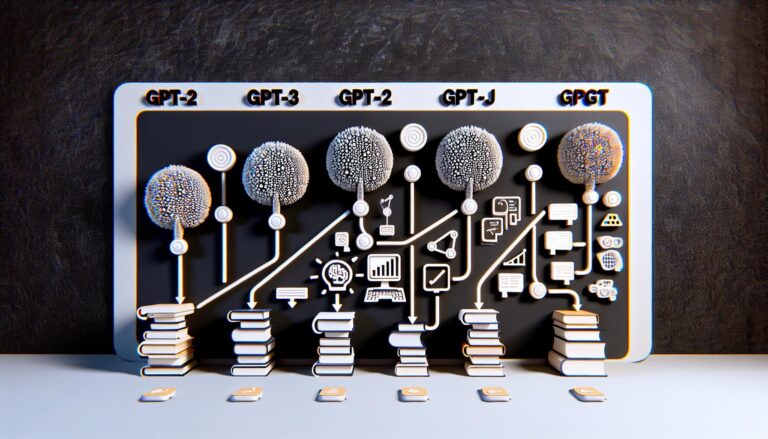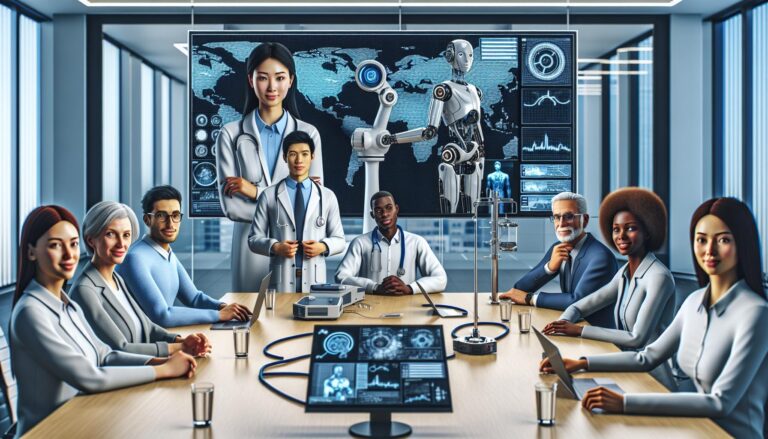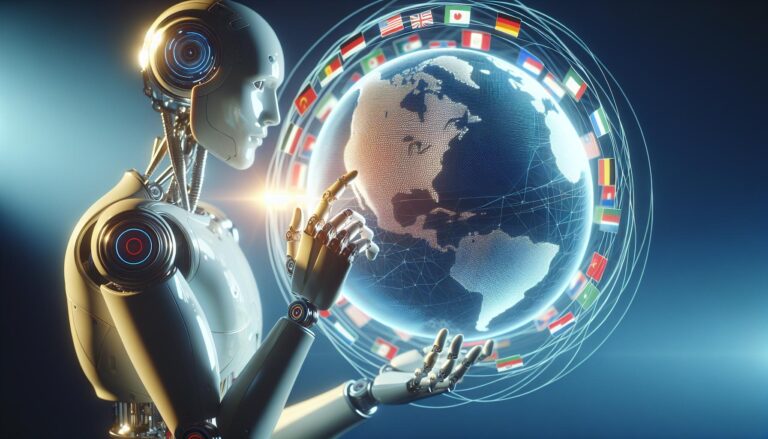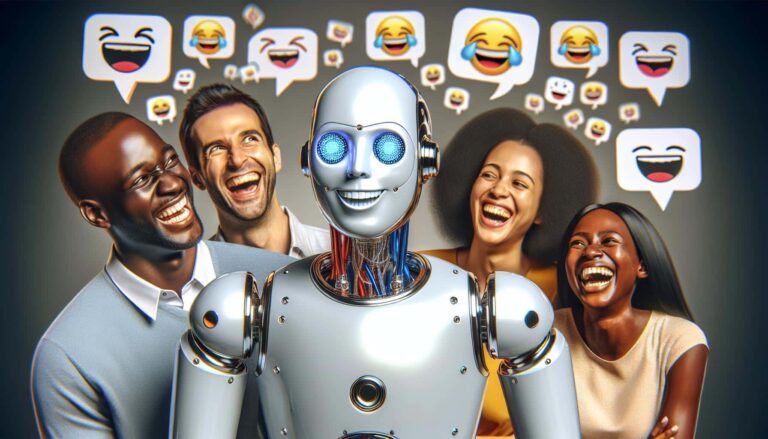ChatGPT: The Most Advanced AI in 2024
ChatGPT is a state-of-the-art language model that is considered the most advanced AI in 2023. Developed by OpenAI, ChatGPT is based on transformer architecture, allowing it to understand and generate human-like text with high accuracy and fluency. This makes ChatGPT particularly useful for a wide range of natural language processing tasks, such as language translation, text generation, and customer service. With its advanced capabilities, ChatGPT can understand the context of a conversation and provide coherent and relevant responses. It can also generate indistinguishable text from human-written content, making it an ideal tool for content creation and other applications. Additionally, ChatGPT can generate human-like text that can be used to create chatbots, virtual assistants, and other conversational AI interfaces. The potential of ChatGPT is limitless; it is being used in various industries such as healthcare, finance, retail, and many more. ChatGPT stands on the brink of revolutionizing how we communicate with machines and pioneering a new era for AI. Its human-like text comprehension and generation are sure to be game-changers in our lives.
PowerBrain AI Chat App powered by ChatGPT & GPT-4
Download iOS: AI Chat
Download Android: AI Chat
Read more on our post about ChatGPT Apps & Chat AI App
Understanding ChatGPT
ChatGPT, short for Generative Pre-trained Transformer, is a deep learning model that uses transformer architecture trained on a massive dataset of internet text to generate human-like text. It is considered one of the most advanced AI in 2023. The model is designed to understand and generate text with high accuracy and fluency, making it particularly useful for a wide range of natural language processing tasks such as language translation, text generation, and customer service.
ChatGPT uses a neural network architecture known as a transformer, which allows it to understand the context of a sentence. This is achieved through self-attention mechanisms, where the model pays attention to certain words in a sentence while generating text. Additionally, ChatGPT uses a technique called unsupervised pre-training. The model is trained on a large text dataset without any specific task, allowing it to learn general language patterns. This pre-training allows the model to be fine-tuned for specific tasks, such as language translation or text generation, by training it on a smaller dataset.
Compared to other language models such as GPT-2, BERT, and ELMO, ChatGPT has several advantages. Firstly, it has the most significant number of parameters, allowing it to generate more coherent and relevant responses. Secondly, it can complete a given text prompt in a more human-like manner. Lastly, it has been trained on a more diverse dataset, allowing it to understand and generate text in a broader range of languages and topics.
Overall, understanding ChatGPT is crucial to utilize its capabilities and potential fully. By understanding the technology behind it, organizations and individuals can use it more effectively and efficiently. Additionally, comparing it with other models gives an idea of where it stands in the current landscape of language models.
Real-World Applications
ChatGPT has a wide range of real-world applications in various industries. One of the primary ways it is being used is in natural language processing tasks, such as language translation, text summarization, and sentiment analysis. It also has the ability to generate human-like text, which makes it an ideal tool for text generation and content creation. Another popular application of ChatGPT is in customer service, where it can be used to create AI-powered chatbots that can understand and respond to customers’ inquiries and commands in a human-like manner.
Several companies and organizations are already using ChatGPT in their operations. For example, OpenAI has developed a product called “ChatGPT API Powered App” which allows organizations to test and experiment with the capabilities of ChatGPT. Other companies such as Microsoft, Appen, and Replika AI have also integrated ChatGPT into their products and services.
The opportunities for ChatGPT are immense. Its capacity to recognize and generate text that is similar to human conversation provides a broad selection of possible uses across industries, including healthcare, finance, and retail. Additionally, ChatGPT can be used to create AI-powered virtual assistants, language tutors, and even personal assistants that can carry out tasks and make decisions on behalf of users. The possibilities are endless, and the future holds great potential for ChatGPT to shape the way we interact with machines and technology.
Chat GPT 3 App for Mobile Smartphone
While there is no official Chat GPT app for iOS or Android, we have built a mobile-friendly web app for the GPT 3 model. The app makes it easy to access the capabilities of Chat GPT from any device. It allows users to input their text prompts and generate natural language responses in real-time, which can be helpful in various applications such as customer service, content creation, and language translation. Additionally, the app supports multiple languages and can be used to translate text from one language to another.
The mobile web app is easy to use and provides an excellent way for users to explore the capabilities of Chat GPT without needing any specialized hardware or software. It is ideal for individuals, organizations, and businesses who want to take advantage of the power of Chat GPT without investing in costly hardware or software.
Download the Chat AI (Powered by GPT-3, GPT-4 & ChatGPT API) app for :
- iOS: Chat GPT app
- Android: Chat GPT app
Advancements in AI
The development of ChatGPT is the result of several advancements in AI that have taken place over the years. One of the most significant advancements is the development of deep learning and neural networks, which have allowed for the creation of models such as ChatGPT that can understand and generate human-like text. Additionally, the availability of large amounts of data and powerful computing resources has also played a crucial role in the development of ChatGPT.
These advancements in AI are important for the development of ChatGPT and for the future of AI as a whole. Deep learning and neural networks are expected to play a major role in developing other AI applications, such as computer vision and speech recognition. Additionally, the availability of large amounts of data and powerful computing resources is expected to continue driving AI and machine learning development.
However, it is important to consider AI advancement’s ethical and societal implications. As AI becomes more advanced, it raises concerns about issues such as job displacement, privacy, and bias. Additionally, the development of AI that can understand and generate human-like text raises questions about accountability and responsibility in the event of errors or misuse. Therefore, society needs to address these issues proactively and ensure that AI development and use are aligned with ethical principles and values.
Tips and Best Practices
To effectively use ChatGPT, it is important to follow some best practices. Firstly, it is crucial to understand the capabilities and limitations of ChatGPT, as well as the specific task or application it will be used for. Secondly, providing the model with high-quality, diverse, and relevant training data is important. Thirdly, it is vital to fine-tune the model for the specific task or application and monitor and evaluate the model’s performance on an ongoing basis.
While ChatGPT is a powerful tool, it also has its limitations. One of the main challenges is that it may have learned biases and stereotypes present in the data because it is trained on internet text. Additionally, it may produce text that is not appropriate or offensive. Therefore, it is important to monitor and evaluate the model’s output and to address any issues that arise.
For organizations looking to implement ChatGPT, it is important to conduct a thorough evaluation of the potential benefits and costs, as well as to develop a clear plan for how the model will be used and integrated into the organization’s operations. Additionally, organizations should consider the ethical and societal implications of using ChatGPT and develop policies and procedures to ensure responsible use.
Conclusion
In conclusion, ChatGPT is a state-of-the-art language model considered the most advanced AI in 2023. It can understand and generate human-like text with a high level of accuracy and fluency, making it particularly useful for a wide range of natural languages processing tasks such as language translation, text generation, and customer service. The real-world applications of ChatGPT are vast, and several companies and organizations are already using it. The potential for future applications is endless and can shape how we interact with machines and technology.
The development of ChatGPT is the result of several advancements in AI, such as deep learning and neural networks, and the availability of large amounts of data and powerful computing resources. However, it is essential to consider AI advancement’s ethical and societal implications. Therefore, it is also crucial to follow some best practices when using ChatGPT, such as providing high-quality, diverse, and relevant training data, fine-tuning the model for the specific task, and monitoring and evaluating its performance.
Overall, ChatGPT is a powerful tool that has the potential to revolutionize the way we interact with machines. We encourage readers to explore ChatGPT and its capabilities and consider how it can be used in their own organizations or projects.
















